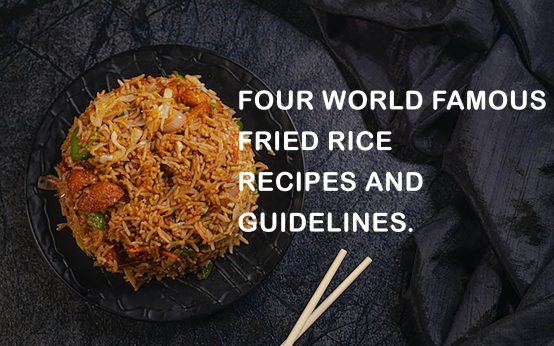Tea is in second place as the most consumed drink in the water after water. The distribution of Tea is all over the world, and Tea is one of the economic plants in many countries. There are variations of Tea: Black Tea, White Tea, Oolong tea, and Pu-erh Tea from the same tea plant. Tea is a native plant in Asia and grows in sub-tropical areas. The scientific name for the tea plant is Camellia sinensis. At present, there are other countries more than Asian countries which produce tea states. Any product from the Camellia sinensis plant is called “Tea”. The environmental requirements for the growth of Tea are sub-tropical climate, high altitudes and loose and deep soil.

Types of Tea.

There are more than 3000 varieties of Tea in the world. They differ from one another by their specific characteristics. The climate, the soil condition and the region where the tree plant grows decide the Tea’s flavour characteristics. However, all these 3000 tea classified into six main categories of Tea. They are,
- Green Tea
- Black Tea
- White Tea
- Oolong Tea
- Pu-erh Tea
- Yellow Tea
Green Tea.
Green Tea is made from tea leaves of the tea plant. Green Tea is a type of “true tea” mainly cultivated in China and Japan. Green Tea is the most popular tea type in China and Japan. Due to the potential health benefits of green Tea, it has become the most wanted tea type around the globe. Green Tea tastes sweeter and softer than the other tea types. All the Tea leaves we use to make different types of Tea are harvested by hand. Immediately after harvesting, the tea leaves are preserved with heat to make them green Tea. The ways of green tea production in China and Japan are different, and they make slight changes in taste. Chinese green Tea is sweeter, floral, woody, and nutty and has vanilla notes with a mellow vegetal flavour. But in Japanese Tea, you will taste intense vegetal flavours with seaweeds and citrus notes. Green Tea is more helpful in digestion, and it is better to drink it during the day. You can drink green Tea before, after and during your meal. Green Tea is consisting of caffeine.

Black Tea.
Authentic Tea comes from the Camellia sinensis plant called Black tea. The green Tea does not leave for oxide, but the black tree leaves for oxide and is processed and dry before serving. After the procession of oxides and drying, the tea leaves grow dark brown. Black Tea is the most popular tea type in the West. People consume black Tea in both hot and cold manners. A large amount of Black Tea is produced in Africa and Sri Lanka, while India has half of the Black Tea. Also, Black Tea was the first tea type introduced to Middle East and Europe countries. Black Tea comes in reddish liquor colour. Therefore it is called Hong cha in China. Black Tea is famous in America as iced Tea with added sugar and milk. For English breakfast, they drink Assam black Tea, while in Indian black Tea is drunk with milk and different flavours called masala chai.

White Tea.
White Tea is produced and harvested at the starting season of the tea plant. The new leaves and tea buds are used to make White Tea. White Tea is naturally low in caffeine as it is harvested before getting ripens. White Tea is the most expensive Tea in the world. The Origin of White Tea is from Fujian province in China. The lea looks light gold and fragrance florals with fruity notes when brewed. White Tea is not bitter like black Tea. As a tradition in China, they harvest the white tea leaves from mid-March to early April. White Tea is drunk as a hot tea type and typically served with a light snack. Since the white tea fragrance is floral and with fruity notes, mild does not add to it.

Oolong Tea.
Oolong Tea does not consider either black Tea or Green Tea. But Oolong tea varies with the characteristics of both black and Green Tea. Oolong tea is a merged production of Black and Green Teas. Oolong tea is also known by the names Wulong and Wuyi. The origin of Oolong tea is Fujian in China, and Taiwan currently produces Oolong tea. Oolong tea comes with different variations by way of oxidation levels. There is a type of Oolong tea that looks light green to darker pigments and comes with spectrum flavours. A different kind of Oolong tea is available with sweet and smoky flavours. There is also a type of Oolong tea with a grassy tone, flowery tone, and spicy aromas and toasty aromas.

Pu-erh Tea.
The origin of Pu-erh Tea is from Yunnan province in China. The other names used to call Pu-erh Tea are Pu’er tea, Po lei tea, Bolay Tea and dark Tea and black Tea in China. Pu-erh Tea is included many health benefits. Pu-erh Tea is used to prepare decadent desserts and is most often consumed by coffee drinkers. The Pu-erh Tea should be produced of nutritional quality, or it will taste mouldy or muddy. Pu-erh Tea is ideal to consume often after heavy meals as it contains the factors to digest. There are many Pu-erh blend productions available in the market with variations. Chrysanthemum, ginger and vanilla mint Pu-erh are available in the market. The Pu-erh Tea comes in the shape of bricks and cakes.

Yellow Tea.
Yellow Tea is considered a miracle drink in China. The Origin of yellow Tea is from China. Yellow Tea is now becoming a favourite tea type around the world. There are many health benefits of Yellow Tea. Yellow Tea is promoted for weight loss and is a suitable tea type for the liver. Yellow Tea consists anti-ageing properties that will bring you flawless skin. Most pregnant ladies in China consume Yellow teal during pregnancy, and it increases their appetite. Yellow Tea is a suitable tea type to prevent diabetes. Yellow Tea appears in bright yellow and offers mellow flavours.

P



 Four World Famous Fried Rice Recipes and Guidelines.
Four World Famous Fried Rice Recipes and Guidelines.  How to make Grandma’s Perfect Bread at Home.
How to make Grandma’s Perfect Bread at Home.  Top 15 Best Rated Beef Dishes in the World.
Top 15 Best Rated Beef Dishes in the World.  The Best Varieties, Tips and Story of Biryani.
The Best Varieties, Tips and Story of Biryani.  Which Burgers are the Best in the World?
Which Burgers are the Best in the World?  Did You Want to Know Top 10 Chocolate Varieties in the World.
Did You Want to Know Top 10 Chocolate Varieties in the World.